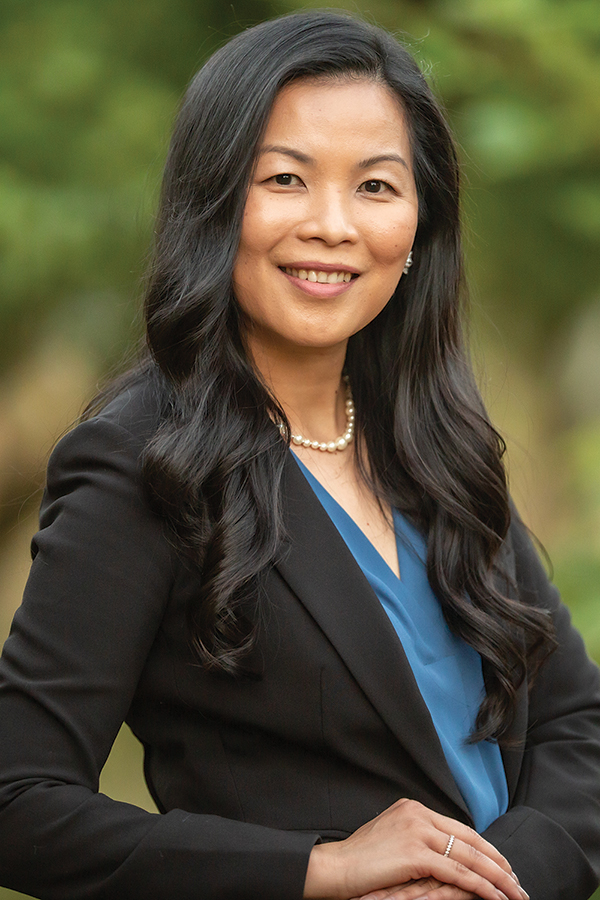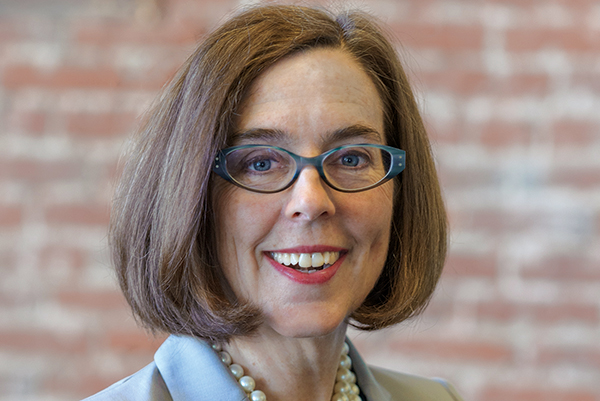When Governor Kate Brown appointed Sophorn Cheang to lead the state’s largest economic development agency in early 2021, she brought a wealth of experience with her as an expert in removing barriers for business.
Cheang previously worked as the Director of the Office of Diversity, Equity, and Inclusion for Gov. Brown since August 2018. In this role, she was responsible for creating business policies that eliminate bias and barriers and provide economic opportunities for all Oregon businesses — in particular minority-owned, women-owned, service-disabled veteran-owned, and emerging small businesses — through equity practices in state procurement and community economic development. She also worked to center equity in state agency practices and policies, foster a culture of transparency and accountability between the state government and community partners, and co-coordinated the Governor’s Racial Justice Council.
We recently spoke with Cheang about her first year leading the state’s efforts to promote a globally competitive, diverse, and inclusive economy.
Congratulations on your recent appointment as Director of Business Oregon. What has Business Oregon accomplished over the last year, and where do you intend to take the organization in the future?
Sophorn Cheang: I’m so proud of our team and our partners. In the past year, we’ve continued the big temporary shift to emergency response in the face of the pandemic, helping our businesses stay open and navigate some uncharted waters. Now we’re in the midst of a transition to recovery and growth, helping our Oregon businesses grow and welcoming new corporate partners to our state.
While we didn’t completely shut down our other primary work, such as infrastructure development, we absolutely reallocated our people to help with the emergency response.
We quickly stood up many programs from scratch, but the biggest were the $50 million of emergency assistance grants we got into the hands of 7,500 small businesses and the commercial rent relief and operational cost program delivering $100 million through 4,600 awards. In all, we delivered nearly $300 million into the hands of thousands of small businesses throughout the state.
In addition to grant funding, we purchased and distributed $14 million worth of masks, gloves, and other protective supplies to small businesses throughout the state, so they didn’t have to find and buy them on their own.
In the midst of all that, we stayed focused on the future and continued to think ahead for how we can support and drive innovation in the state, crafting an Innovation Plan that can help drive policy in the years to come.
Our agency’s portfolio includes over 80 distinct grants, loans, tax incentives, and other programs, spanning infrastructure, global trade, innovation, business development, and technical assistance for businesses. A strategic plan adopted in 2018 guides us through the year 2022, and we’re preparing to develop the strategic plan for the following five years.
Our agency is currently developing a statewide economic recovery plan that is equitable and inclusive for all Oregonians. Our goal is to identify and analyze those parts of Oregon’s economy that have been negatively impacted by the pandemic, identify existing economic development programs that may best serve to mitigate those impacts and propose new programs to promote growth and address urgent community needs.
What are some of Oregon’s biggest economic development wins over the last year?
Cheang: In Oregon, we focus on helping our existing companies grow and prosper, and that really sends the signal to companies outside our state looking for a west coast location.
We saw growth from biotechnology firm Genentech, investing $175 million for an additional facility, adding 100 new jobs. In central Oregon, Facebook continued its investment there, which will total about $2 billion, adding 900,000 square feet of facilities to its 11-building campus. And of course, Oregon continues to be the hub of Intel’s semiconductor research and manufacturing operations. Intel is wrapping up construction of a $3 billion expansion to its most advanced research facility, D1X.
Amazon, Google, Wayfair and DeBeers, all have launched new or expanded operations this past year. We’ve also seen many Oregon companies going public this year. Coffee icon Dutch Bros became Oregon’s biggest IPO raising nearly $500 million. Vacasa, KinderCare, ESS Inc., AbSci and NuScale all went public in 2021.
How would you describe Oregon’s business climate? What are some of Oregon’s strongest assets for business?
Cheang: While the business cost structures are very competitive, such assets as Pacific Rim access, quality workforce, and enviable quality of life make the difference.
You will find amazing talent in Oregon, and we’re ranked 3rd nationally for inbound migration in 2020. People are moving here for the quality of life, careers, and business opportunities. Whether it’s talented manufacturing workers or the creative sector workforce, we have top-notch talent.
Oregon has no sales tax, which can deliver significant savings for businesses. When you need to buy new equipment, that equipment purchase is tax-free, providing significant savings enabling you to keep your manufacturing lines on the cutting edge.
Also, Oregon delivers proximity to California — the 5th-largest economy in the world — but at a much lower cost of living and cost of doing business.


